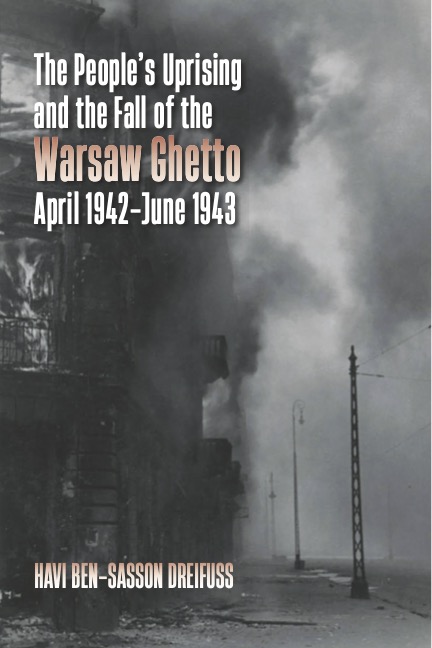Forthcoming
Between Jaffa and Tel Aviv, 1870–1930: A Memoir
Yosef Eliyahu Chelouche, author; Michelle U. Campos and Or Aleksandrowicz, editors
The literary memoir of a founder of Tel Aviv, now available for the first time in an annotated English translation.

Born in Jaffa in 1870, Yosef Eliyahu Chelouche grew up within a notable Sephardi family in the local Jewish community. He went on to become a prominent entrepreneur; a founder of Tel Aviv; and a fierce critic of the Ashkenazi Zionist leadership, Arab nationalism, and British colonial sectarianism; before emerging, in the last decade of his life, as an anguished public figure struggling to repair Arab-Jewish relations.
His memoir paints an intimate portrait of life in Palestine at the turn of the twentieth century, told from the perspective of a Middle Eastern Jew deeply embedded in local society. By centering on the world and experiences of a native Jew who was an eyewitness to and participant in the unfolding conflict in Palestine, this book shows how the course of Zionist politics and Jewish-Arab relations in pre-state Palestine might have taken alternative pathways. A comprehensive introduction sets the scene in late nineteenth- and early twentieth-century Jaffa and thoughtful annotations contextualize Chelouche’s story within the modern history of Palestine and Israel. Between Jaffa and Tel Aviv, 1870–1930 tells the fascinating story of a civic leader—and offers a complex view of the various cultural, social, and political forces that forged multilayered Jewish identities in the Middle East. The book includes a family tree and is illustrated with photographs of the family and scenes of Jaffa and early Tel Aviv.
Yosef Eliyahu Chelouche (1870–1934) was a prominent builder, entrepreneur, public figure, and a founder of Tel Aviv.
“Between Jaffa and Tel Aviv is a first-hand account by a Jewish “native son” of a dramatic period in the history of Palestine. A brilliant introduction contextualizes the memoir, while photographs, maps, and annotations make this book a superb resource for both research and teaching.” —Abigail Jacobson, author of Oriental Neighbors: Middle Eastern Jews and Arabs in Mandatory Palestine
"With this excellent translation, the Chelouche memoir joins the canon of texts students must consult to understand Palestine's transformations in the 19th and early-20th century. Equally valuable is Campos and Aleksandrowicz's lucid, erudite introduction contextualizing Chelouche’s fascinating life." —Jonathan Marc Gribetz, author of Reading Herzl in Beirut
“Beautifully translated and masterfully introduced, this memoir is a riveting historical document about Ottoman Palestine, Mandatory Palestine, early Zionism, and the intertwined histories of Jaffa and Tel Aviv. With its vivid narratives, nostalgia to bygone Arab-Jewish coexistence, as well as inner contradictions and blind spots, it offers a fascinating window into Sephardi perception and reception of Zionism. An invaluable resource for students and scholars.” —Orit Bashkin, coeditor, Jews and Journeys: Travel and the Performance of Jewish Identity
About the Editors
Michelle U. Campos is associate professor of history and Jewish studies at Pennsylvania State University. A historian of late Ottoman Palestine, she is the author of Ottoman Brothers: Muslims, Christians, and Jews in Early Twentieth-Century Palestine.
Or Aleksandrowicz is assistant professor in the Faculty of Architecture and Town Planning at the Technion-Israel Institute of Technology. He is an architectural and urban historian and serves as the chief editor of Architectures book series at Babel Publishers. Aleksandrowicz is also a descendant of Yosef Eliyahu Chelouche.
The People’s Uprising and the Fall of the Warsaw Ghetto, April 1942-June 1943
Havi Ben-Sasson Dreifuss

The People’s Uprising and the Fall of the Warsaw Ghetto, April 1942-June 1943 sheds light on the lives, choices, and experiences of the tens of thousands of Jews who were not part of the underground armed resistance but nonetheless played a crucial role in the life of the ghetto and supported the famed Warsaw Ghetto Uprising. This riveting and dramatic account focuses on the final year of the Warsaw ghetto—from the Great Deportation in the summer of 1942 through the suppression of the uprising in mid-1943. Drawing on powerful contemporary testimonies, diaries, and documents—many of them previously unexplored—the book reveals how members of the broader Jewish population struggled to survive, maintain family and community life, and make impossible moral decisions in the face of fear, hunger, and daily violence. Expanding the lens beyond the fighters themselves, it offers a story of devastation, but also of resilience and human dignity.
About the Author
Havi Ben-Sasson Dreifuss is a professor of Jewish History at Tel Aviv University, where she heads the Institute for the History of Polish Jewry and Israel-Poland Relations. She also serves as the director of the Center for Research on the Holocaust in Poland at Yad Vashem. Her research focuses on Jewish life during the Holocaust, with particular attention to Jewish-Polish relations, religious life under Nazi rule, antisemitism, and Jewish responses to persecution and extermination. She is the author of Relations Between Jews and Poles: The Jewish Perspective (Yad Vashem Publications, 2018).